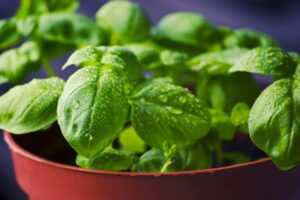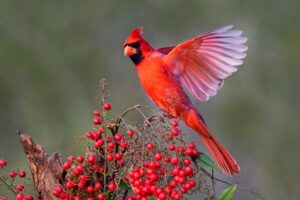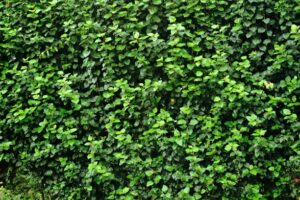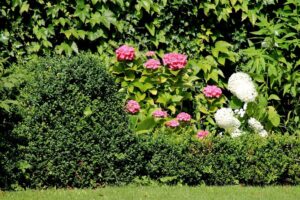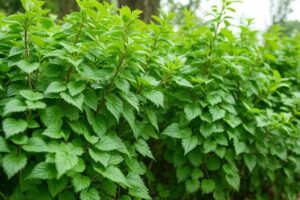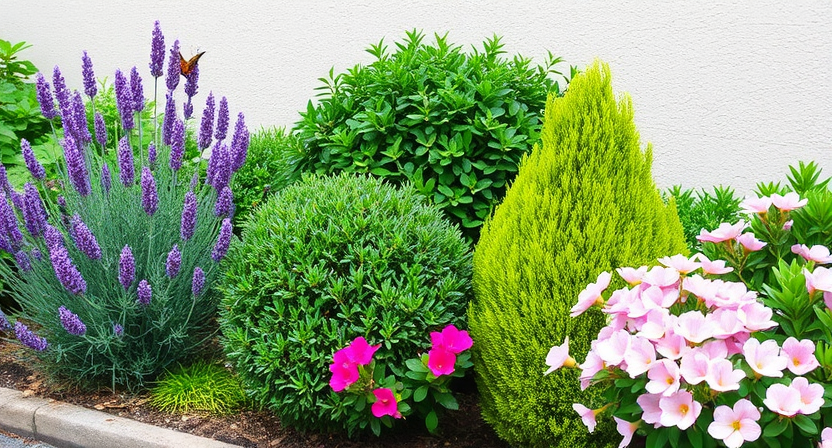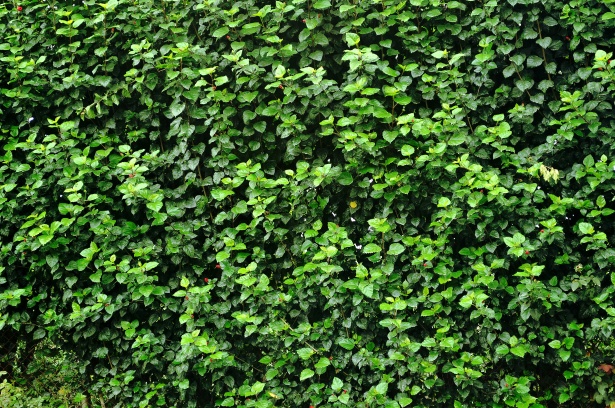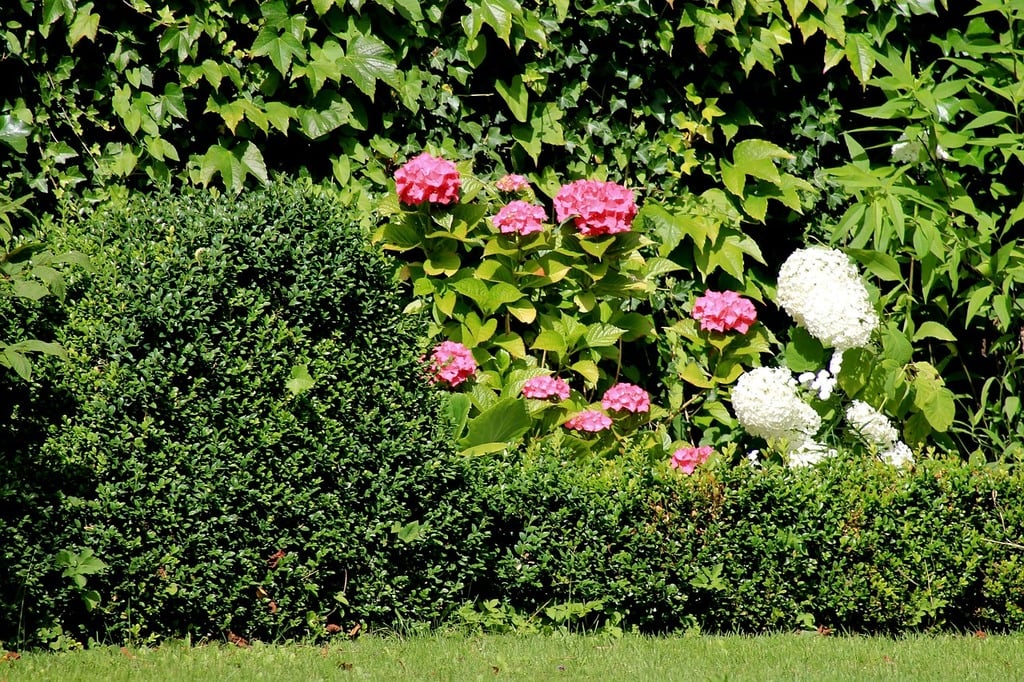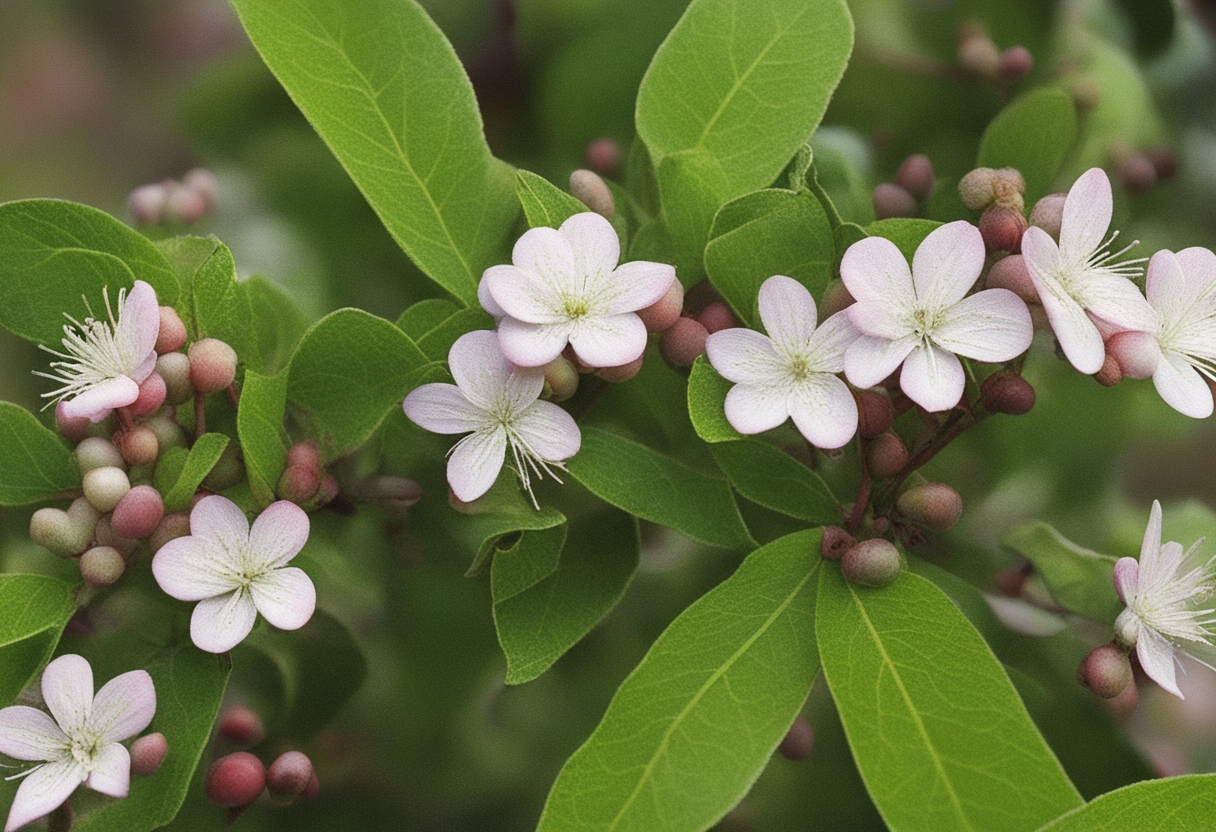Characteristics of Low-Maintenance Shrubs

Low-maintenance shrubs are a popular choice for busy gardeners who want to add beauty to their landscapes without spending excessive time and effort on plant care. One of the key characteristics of low-maintenance shrubs is their ability to thrive with minimal attention. These shrubs are generally hardy and resistant to common pests and diseases, allowing them to withstand various environmental conditions without requiring constant monitoring or intervention. They require less pruning, fertilizing, and watering, making them an ideal choice for those with limited time or gardening experience.
In addition to their low-care requirements, low-maintenance shrubs also come in a wide range of sizes, shapes, and foliage colors, offering a variety of options for creating visual interest in your garden. From compact shrubs that fit well in small spaces to larger shrubs that can serve as focal points, there is a low-maintenance shrub to suit every garden design. These shrubs can also be found in both deciduous and evergreen varieties, providing year-round beauty and structure to your outdoor space. Whether you prefer vibrant blooms or attractive foliage, low-maintenance shrubs offer an array of choices to meet your aesthetic preferences.
• Low-maintenance shrubs thrive with minimal attention and care
• They are hardy and resistant to pests and diseases
• Require less pruning, fertilizing, and watering compared to other plants
• Ideal for busy gardeners or those with limited time or experience in gardening
• Come in a wide range of sizes, shapes, and foliage colors for visual interest
• Can be used as focal points or fill small spaces in garden designs
• Available in both deciduous and evergreen varieties for year-round beauty
• Offer options for vibrant blooms or attractive foliage based on aesthetic preferences
Ideal Growing Conditions for Low-Maintenance Shrubs

Low-maintenance shrubs are popular choices for gardens because of their ability to thrive with minimal care. To ensure optimal growth and health, it is important to provide them with the ideal growing conditions. These shrubs generally prefer well-drained soil that is rich in organic matter. In addition, they thrive in areas with full to partial sunlight, depending on the specific variety. Providing them with the right growing conditions will promote healthy growth and reduce the need for constant maintenance.
Adequate watering is another key factor in the ideal growing conditions for low-maintenance shrubs. While they generally require less water than other plants, it is essential to ensure that they receive enough moisture, especially during dry periods. Deep, infrequent watering is preferred as it encourages the development of deep root systems, making the shrubs more resilient to drought conditions. Mulching around the base of the shrubs helps to retain soil moisture and suppress weeds, further reducing the need for constant watering. By providing the right amount of water, low-maintenance shrubs can thrive and continue to enhance your garden with minimal intervention.
• Well-drained soil that is rich in organic matter
• Full to partial sunlight, depending on the specific variety
• Adequate watering, although they require less water than other plants
• Deep, infrequent watering to encourage deep root systems and drought resilience
• Mulching around the base of shrubs to retain soil moisture and suppress weeds
Choosing the Right Shrubs for Your Garden

When it comes to choosing the right shrubs for your garden, there are several factors to consider that will help ensure their successful growth and long-term health. Firstly, it is important to assess the soil conditions in your garden. Different shrubs have different soil preferences, so understanding the pH level, drainage, and fertility of your soil will help you select shrubs that are well-suited to your garden’s specific needs.
Another important consideration is the amount of sunlight your garden receives. Some shrubs thrive in full sun, while others prefer partial shade or even full shade. Take note of the sun exposure in different areas of your garden throughout the day, and choose shrubs that will thrive in those specific conditions. Additionally, the size and shape of the shrubs should be considered to ensure they fit well within your garden landscape and don’t become overgrown or crowded over time. By carefully considering these factors, you can confidently choose the right shrubs for your garden and create a beautiful and low-maintenance outdoor space.
• Assess the soil conditions in your garden, including pH level, drainage, and fertility
• Understand different shrubs’ soil preferences to select those well-suited for your garden
• Consider the amount of sunlight your garden receives throughout the day
• Some shrubs thrive in full sun, while others prefer partial or full shade
• Choose shrubs that will thrive in the specific sun exposure conditions of different areas in your garden
• Take into account the size and shape of shrubs to ensure they fit well within your garden landscape
• Avoid selecting shrubs that may become overgrown or crowded over time
• Carefully consider these factors to create a beautiful and low-maintenance outdoor space
Shrubs That Thrive with Minimal Watering

The key to finding shrubs that thrive with minimal watering is to choose those with natural adaptations to drought conditions. These plants have developed mechanisms to store water efficiently and minimize water loss through their leaves. One such shrub is the Russian sage (Perovskia atriplicifolia), which exhibits silver-gray foliage and produces vibrant purple flowers. It is particularly suited to dry climates and requires watering only during extended periods of drought. Another option is the oleander (Nerium oleander), a tough evergreen shrub known for its showy, fragrant flowers. It can survive with limited watering once established and is well-suited for coastal gardens with sandy or poor soil.
When selecting shrubs that thrive with minimal watering, it is also essential to consider their root systems. Plants with deep, extensive roots can access water from deeper soil layers, making them more resilient during dry spells. The yucca (Yucca spp.) is a prime example, with its sword-like leaves and dramatic flower spikes. This drought-tolerant shrub features a deep taproot that enables it to absorb moisture from deep underground. Likewise, the lavender (Lavandula spp.) boasts long taproots, which allows it to withstand drought conditions and thrive in well-drained soil. By opting for shrubs with these natural adaptations and sturdy root systems, gardeners can sustain a thriving garden with minimal watering.
• Russian sage (Perovskia atriplicifolia) – silver-gray foliage, vibrant purple flowers, suited to dry climates, requires watering only during extended periods of drought
• Oleander (Nerium oleander) – tough evergreen shrub with showy, fragrant flowers, can survive with limited watering once established, well-suited for coastal gardens with sandy or poor soil
• Yucca (Yucca spp.) – sword-like leaves and dramatic flower spikes, deep taproot enables it to absorb moisture from deep underground
• Lavender (Lavandula spp.) – long taproots allow it to withstand drought conditions and thrive in well-drained soil
Drought-Tolerant Shrubs for Busy Gardeners

One of the biggest challenges for busy gardeners is keeping their plants hydrated during dry spells. However, there are plenty of drought-tolerant shrubs that can thrive with minimal watering. These shrubs have adapted to survive in arid conditions, making them an excellent choice for those who don’t have the time or inclination to constantly water their garden.
One such shrub is the lavender. Known for its beautiful purple flowers and fragrant scent, lavender is a hardy shrub that can tolerate drought conditions. It requires very little water once established and can even thrive in poor, well-drained soil. In addition to being drought-resistant, lavender also attracts pollinators like bees and butterflies, bringing life and color to your garden. By incorporating drought-tolerant shrubs like lavender into your garden, you can enjoy a beautiful landscape without the constant worry of watering.
• Lavender is a drought-tolerant shrub that requires minimal watering.
• It can thrive in arid conditions and poor, well-drained soil.
• Lavender attracts pollinators like bees and butterflies to your garden.
Shade-Tolerant Shrubs That Require Little Maintenance

Shade-tolerant shrubs offer a fantastic solution for gardeners looking to add greenery to areas with limited sunlight. These shrubs thrive in the dappled shade provided by trees or structures, making them perfect for those shady spots that are difficult to fill. One example of a shade-tolerant shrub that requires little maintenance is the Japanese Pieris. With its attractive evergreen foliage and delicate blooms, the Japanese Pieris adds a touch of elegance to any shady garden. This shrub is not only low-maintenance but also resistant to common pests and diseases, making it an excellent choice for busy gardeners.
Another shade-tolerant shrub that requires little maintenance is the Oregon Grape. This hardy shrub is known for its vibrant yellow flowers and blue-black berries. With its ability to thrive in both shade and partial sunlight, the Oregon Grape is a versatile option for gardens with varying light conditions. Additionally, this shrub is drought-tolerant, making it an ideal choice for those who want to conserve water. With minimal pruning and minimal watering needs, the Oregon Grape effortlessly adds beauty to your shade garden while still allowing you to spend more time enjoying it rather than working on it.
• Japanese Pieris:
– Attractive evergreen foliage and delicate blooms
– Low-maintenance
– Resistant to common pests and diseases
• Oregon Grape:
– Vibrant yellow flowers and blue-black berries
– Thrives in shade and partial sunlight
– Drought-tolerant, ideal for water conservation
– Minimal pruning and watering needs
Shrubs That Resist Common Pests and Diseases

One of the key challenges that gardeners face is dealing with pests and diseases that can wreak havoc on their shrubs. However, there are certain types of shrubs that have shown remarkable resistance to these common issues, making them excellent choices for low-maintenance gardens.
For instance, the juniper shrub is known for its strong resistance to many pests and diseases. Its dense foliage and aromatic oils act as natural repellents, deterring common garden pests such as deer and rabbits. Additionally, the juniper shrub is highly resilient to fungal infections, ensuring that it remains healthy and vibrant throughout the seasons. Thus, incorporating juniper shrubs into your garden can provide a hassle-free solution to maintaining shrubs that are resistant to common pests and diseases.
Another shrub that thrives in this aspect is the holly shrub. With its spiky leaves and sharp thorns, the holly shrub naturally deters animals and insects that may cause harm. Furthermore, its vibrant berries are toxic to many pests, acting as a natural deterrent. Along with its resistance to diseases, the holly shrub proves to be a reliable and low-maintenance choice for any gardener looking to avoid common issues that could harm their shrubs.
• Juniper shrubs have dense foliage and aromatic oils that repel pests like deer and rabbits.
• They are highly resistant to fungal infections, ensuring their health throughout the seasons.
• Incorporating juniper shrubs into your garden can provide a hassle-free solution for pest and disease resistance.
• Holly shrubs have spiky leaves and sharp thorns that deter animals and insects.
• The vibrant berries of holly shrubs are toxic to many pests, acting as a natural deterrent.
• Along with their resistance to diseases, holly shrubs are low-maintenance options for gardeners.
Low-Maintenance Shrubs That Can Withstand Harsh Weather

When it comes to withstanding harsh weather conditions, low-maintenance shrubs can be a great addition to your garden. These resilient plants have the ability to thrive in various climates and withstand extreme temperatures, making them ideal choices for regions with unpredictable weather patterns.
One type of low-maintenance shrub that can withstand harsh weather is the juniper. Known for its hardy nature, junipers are drought-tolerant and can survive in both hot and cold climates. These shrubs are able to withstand strong winds, heavy snowfall, and even salt spray, making them a popular choice for coastal gardens.
Another option to consider is the Russian sage. This hardy perennial shrub is not only drought-tolerant but also highly resistant to extreme temperatures. With its silvery foliage and abundant purple flowers, Russian sage adds both beauty and resilience to your garden. From scorching summers to freezing winters, this shrub remains unfazed, making it a perfect choice for gardens in regions with harsh weather conditions.
It’s important to note that while these shrubs can withstand harsh weather, they still require some basic care to thrive. Regular watering, mulching, and proper pruning are essential to ensure their health and longevity. By selecting low-maintenance shrubs that can withstand harsh weather, you can enjoy a beautiful and resilient garden all year round.
• Junipers are a type of low-maintenance shrub that can withstand harsh weather conditions.
• They are known for their hardy nature and ability to survive in hot and cold climates.
• Junipers can withstand strong winds, heavy snowfall, and salt spray, making them ideal for coastal gardens.
• Russian sage is another low-maintenance shrub that can tolerate extreme temperatures.
• It is drought-tolerant and remains resilient in scorching summers and freezing winters.
• Russian sage adds beauty with its silvery foliage and abundant purple flowers.
• While these shrubs are resilient, they still require basic care such as regular watering, mulching, and pruning to ensure their health and longevity.
Pruning Tips for Low-Maintenance Shrubs

Proper pruning plays a vital role in maintaining the health and appearance of low-maintenance shrubs. While these shrubs are designed to require minimal upkeep, strategic pruning can further enhance their beauty and longevity. When it comes to pruning low-maintenance shrubs, timing is crucial. It is best to prune in late winter or early spring before new growth begins, as this allows the shrubs to recover quickly and flourish throughout the growing season. Regular pruning should focus on removing dead or damaged branches, as well as any overcrowded or crossing stems. By maintaining a clean and open structure, low-maintenance shrubs can thrive and continue to add value to your garden.
In addition to proper timing, understanding the specific pruning needs of different low-maintenance shrubs is essential. Some shrubs may benefit from regular shearing to maintain a specific shape, while others may require more selective pruning to remove specific branches or stems. It is important to familiarize yourself with the specific pruning requirements for each shrub in your garden to avoid detrimental pruning practices. Remember, the goal of pruning low-maintenance shrubs is to enhance their natural form and overall health, so it is important to approach pruning with care and precision. With the right pruning techniques, these resilient plants can continue to thrive with minimal effort on your part.
• Pruning in late winter or early spring allows for quick recovery and flourishing throughout the growing season.
• Focus on removing dead or damaged branches, as well as overcrowded or crossing stems.
• Maintaining a clean and open structure promotes the health and longevity of low-maintenance shrubs.
• Different low-maintenance shrubs may have specific pruning needs, such as regular shearing or selective pruning.
• Familiarize yourself with the specific pruning requirements for each shrub to avoid detrimental practices.
• Approach pruning with care and precision to enhance natural form and overall health of the shrubs.
How to Incorporate Low-Maintenance Shrubs into Your Garden Design

Low-maintenance shrubs can be a wonderful addition to any garden design, adding beauty and character with minimal effort. When incorporating these shrubs into your garden, it is important to consider their size, growth habits, and aesthetic appeal. One effective way to incorporate low-maintenance shrubs is by using them as borders or hedges. These shrubs can create a defined edge for your garden, adding structure and a sense of organization. Additionally, they can provide privacy and security, acting as a natural barrier between your property and the outside world.
Another way to incorporate low-maintenance shrubs into your garden design is by using them as focal points or accents. Choose shrubs with interesting foliage or vibrant flowers that can stand out in the landscape. Placing them strategically in areas that need a burst of color or visual interest can create eye-catching focal points that draw attention and create a sense of intrigue. Moreover, these shrubs can be used to create visual balance or contrast when paired with other plants or features in your garden design.
• Using low-maintenance shrubs as borders or hedges can add structure and organization to your garden design.
• These shrubs can also provide privacy and security by acting as a natural barrier.
• Selecting shrubs with interesting foliage or vibrant flowers can create eye-catching focal points in your garden.
• Placing these focal point shrubs strategically in areas that need a burst of color or visual interest can draw attention and create intrigue.
• Low-maintenance shrubs can be used to create visual balance or contrast when paired with other plants or features in your garden design.



